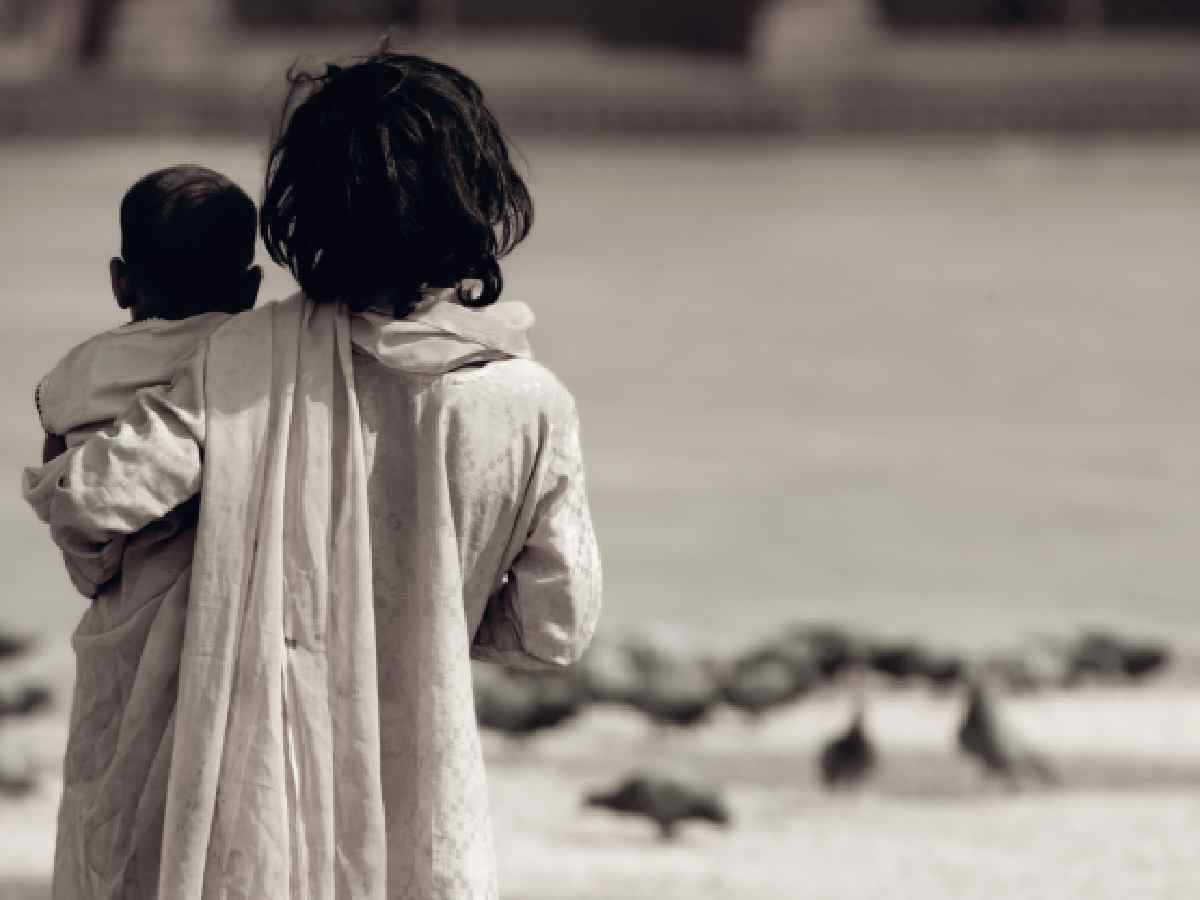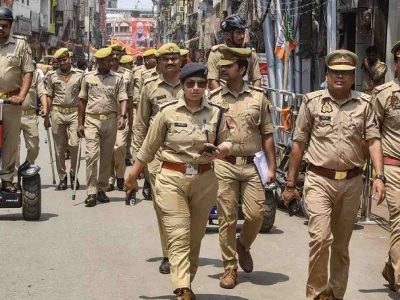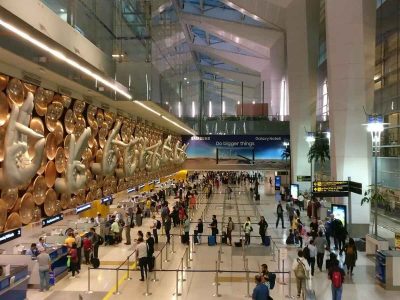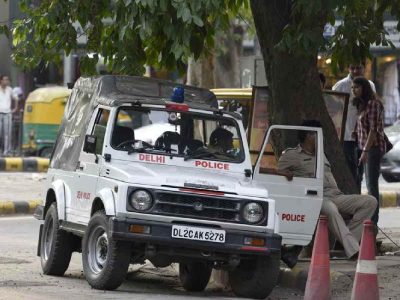Child labour: The rescue of an 11-year-old girl from a high-rise in Noida eventually led to the arrest of five persons who had employed her as a domestic help, on November 12. The girl was rescued a day prior, as she attempted her escape following allegations of mistreatment and abuse.
Neighbours raise alarm
According to the police, the minor was rescued after the neighbours informed them of a “girl playing with mud between two towers”. The resident highlighted that the girl looked malnourished, her clothes were dirty, and she was constantly shaking with fright. Reportedly, when she was rescued and put in front of the Child Welfare Committee, her statement included severe allegations of abuse at the hands of her employers.
“We found several bruises all over her body when she was being physically examined. She alleged that she was severely beaten up by her employers,” said a police official.
The 11-year-old, who had been working for a year and a half, had reached the National Capital Region from Jharkhand’s Bokaro. Unfortunately, she was not the first person, nor the last, to have ended up here in Delhi-NCR from other corners of India.
Also read: Pollution: Delhi’s air quality slips back to ‘severe’ with AQI at 420
According to Delhi Police officials, child trafficking in the national capital is fairly uncommon but it eventually turns into the final destination for traffickers, owing to its proximity to major cities nearby — Gurugram and Noida. More often than not, mostly children are trafficked into the capital to get them to join the workforce, with most of the ‘job hunting’ being done by the multiple placement agencies that are scattered across.
It has been established by the Child Labour (Prohibition and Regulation) Act, 1986, that the engagement of “children in certain employments and to regulate the conditions of work of children in certain other employments” is prohibited. It was thus established that the employment of children below 14 or between 14 and 18 in a hazardous occupation is punishable by law in India.
However, a multitude of cases emerge where these children are rescued from multiple shops and factories across the national capital. Specifically, the minors are used by the placement agencies to work mostly in industrial areas, owing to the heavy concentration of factories there.
Recent raids revels dire conditions
On October 24, at least 15 children, aged between seven and 17 years, were rescued from a toy factory in northeast Delhi’s Karawal Nagar. These children were being kept against their will, being forced to work for a mere Rs 500 per week for 12 hours a day. They were also subjected to physical abuse by the factory owner.
Similar raids were carried out on August 5 and 6, where 73 children were rescued from two factories in Delhi. Out of the rescued, 18 were rescued from a jute factory in North East Delhi’s Bhajanpura and the other 55 from a toy factory in Narela-Bawana.
Usually, during the course of these raids, the police are assisted by NGOs which work for children’s rights. “We are tasked with carrying out operations to identify these factories and workplaces where children are used. Normally, we conduct recon operations to identify these places and then inform the police about it. We are normally asked to tag alongside them while they apprehend the accused,” said Rakesh Kumar, from Bachpan Bachao Andolan.
According to Ravi Kant, the founder of Shakti Vahini, there have been around 29,224 children rescued in Delhi from April 2023 to March 2024. “We have rescued these many children during the said time,” he said.
On the other hand, according to data secured from Delhi Police, South East had recorded anastounding number at 93 children being rescued, while in the Outer and North districts, 35 and 33 were rescued, respectively.
South East remains disparagingly high owing to its industrial areas at Okhla Industrial Estate, divided into three phases.
“Our raid operations are mostly limited to this area itself. Most of these children are brought into Delhi by their relatives or through a placement agency, which gets into contact by itself with the parents of the children themselves. These children, mostly, hail from poor households, so the parents are not against the idea of sending their children to the ‘big city’,” said a senior official.
On the other hand, Prayas Juvenile Action Centre has been fairly hands-on with the entire experience that comes with operating a safety network for children in the national capital.
NGOs step in to assist rescues
The NGO has conducted multiple raids across Delhi to help rescue the said children. According to Jeebanjyoti Mohanty, the Joint Director of Prayas JAC, the rescue missions are mostly carried out over a period of months to finally get done with the operation. “It’s a process in itself. Normally, we stake out these factories and sense how they are employing the children and in what positions. After determining that, we spring to action and inform the police about any raid that is to follow there,” she said.
However, she highlighted that most of the hurt that is meted out goes through placement agencies which get these children employed as domestic workers. “Multiple instances have taken place across the board regarding these children being beaten up on multiple occasions at households where they found themselves working. Normally, a representative from these agencies visits far-flung villages of states like Jharkhand, Odisha, Uttar Pradesh, and Bihar, among others, where they offer a specific amount of money to the guardians for the minor. Since these families are usually extremely poor, they do not protest as such, which leads the child to get trafficked to Delhi. It is here that they are sent off to work at factories or households, even when the agency has the child under their wing, they are treated poorly,” she said.
Mohanty added that these children are normally paid an amount of around Rs 100-150 per day for the amount of work that they do. “By the end of the month, they earn around Rs 3,000,” she said. Owing to the strenuous nature of the job, physical toil often leads to abuse. “Minor mistakes often lead to them being beaten up, sustaining unthinkable injuries, especially with children who work at households,” said a representative of Shakti Vahini.
According to these activists, most of these placement agencies are present at Shakurpur, Karol Bagh, among others, while some function from Gurugram and Noida.
Considering the Noida incident, the five accused included the girl’s mother, her uncle and aunt, and her employers.
Also read: Street animals, pets suffer as pollution levels rise in Delhi
Legal action against accused
Apart from the Child Labour Prohibition Act, they have also been booked under section 115(2) (voluntarily causing hurt) of the Bharatiya Nyaya Sanhita (BNS).
A similar incident had occurred on December 9, 2023, at an uptown locality in Gurugram, where a 13-year-old was allegedly held in captivity, tortured, and sexually abused for a period of five months before she was rescued by her family.
Following the complaint, the accused, Shashi Sharma, and her two sons were booked under charges of cruelty, causing hurt, outraging modesty of women, and criminal intimidation. The three were also booked under Section 10 of the Prevention of Children from Sexual Offences (POCSO) Act, and Section 75 of the Juvenile Justice Act.





